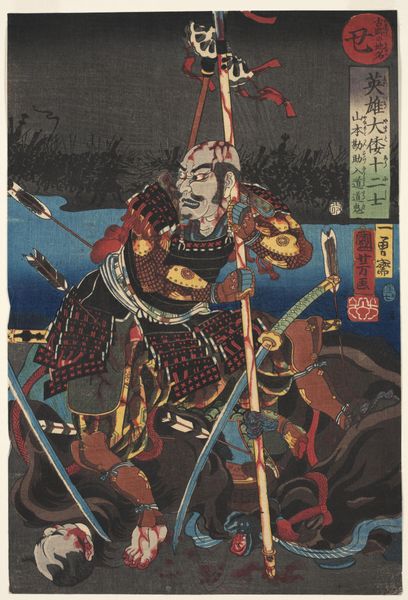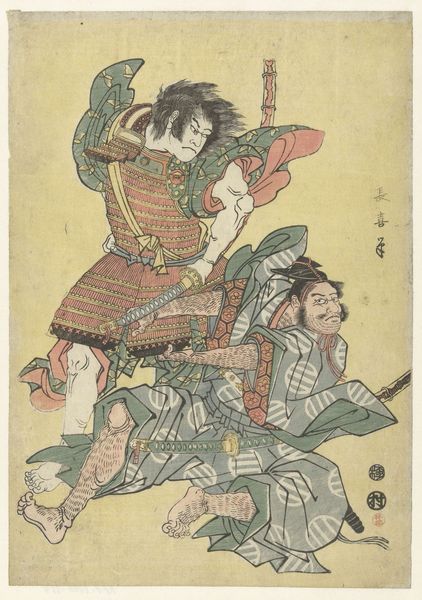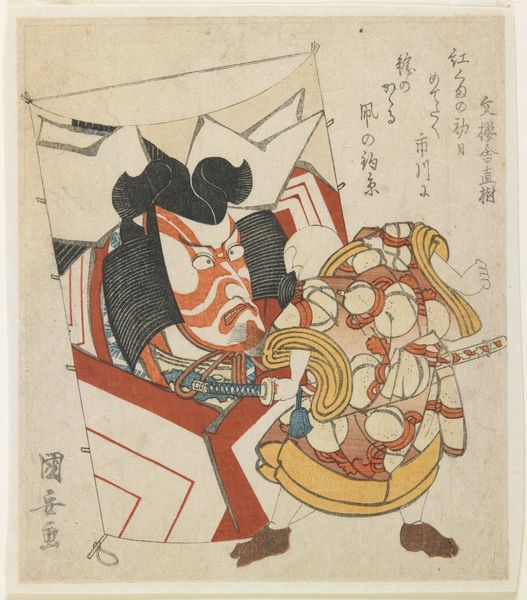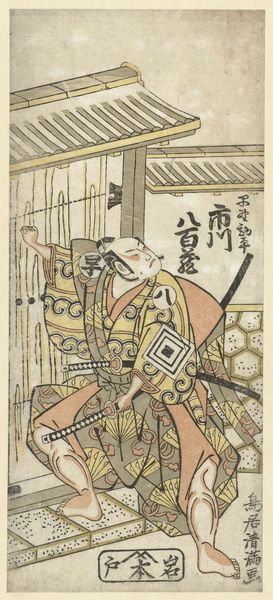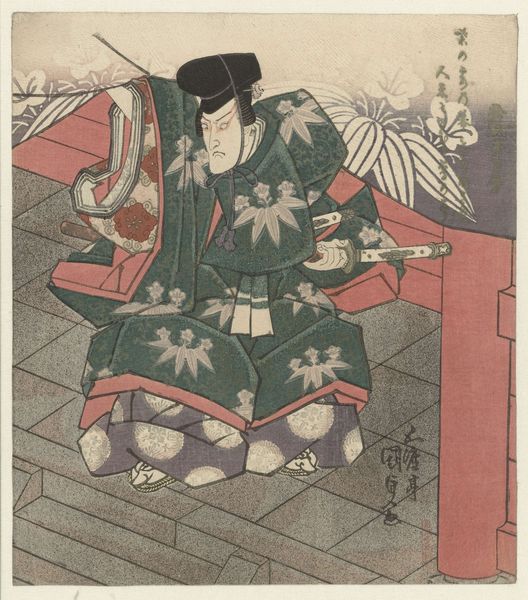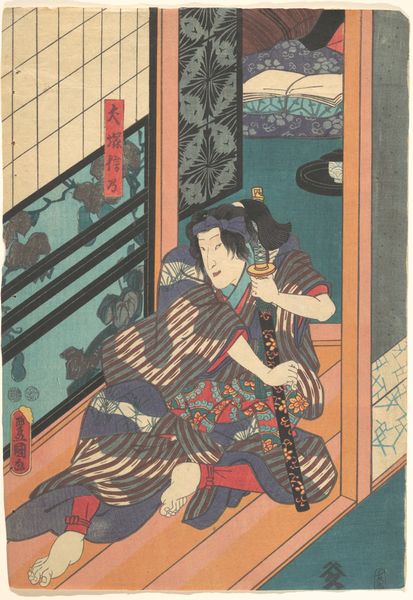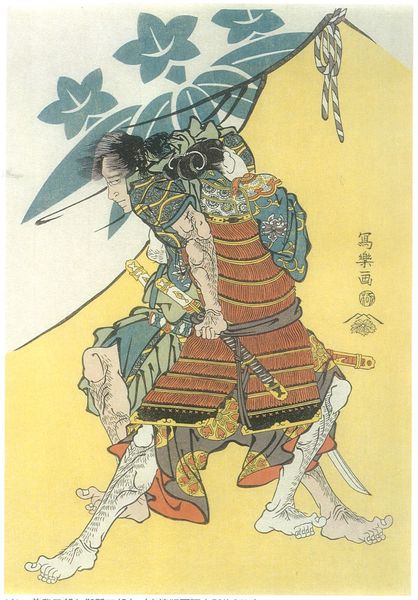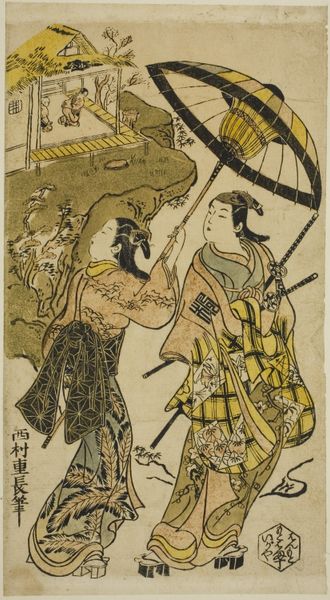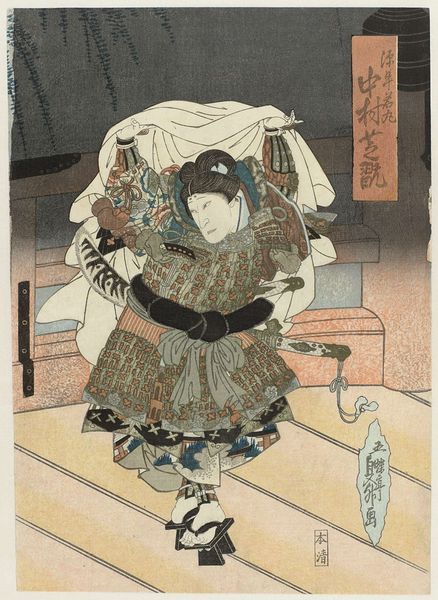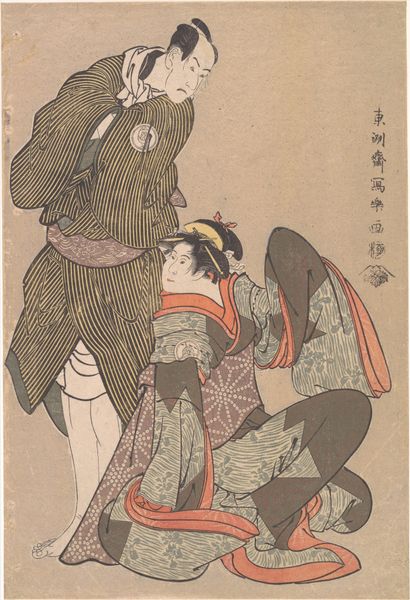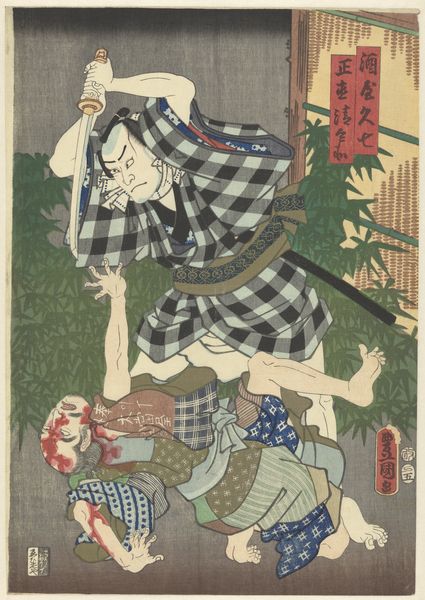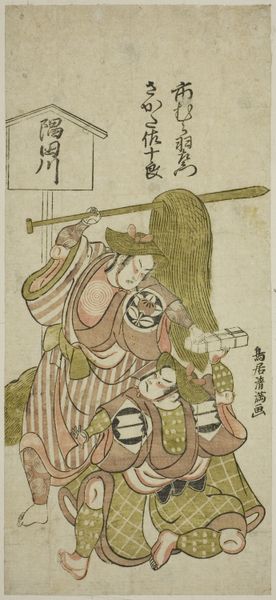
print, woodblock-print
#
portrait
#
weapon
# print
#
asian-art
#
ukiyo-e
#
figuration
#
woodblock-print
Dimensions: height 362 mm, width 250 mm
Copyright: Rijks Museum: Open Domain
Curator: I’m immediately struck by the sheer force radiating from this image. It’s quite an intense expression. Editor: Indeed! The piece before us, a woodblock print created around 1837 by Gochōtei Sadamasu, presents Nakamura Utaemon IV in the role of Benkei. It's a vibrant example of ukiyo-e portraiture. Curator: Ukiyo-e, images of the floating world, often depicted actors and scenes from kabuki theatre, which fits here. Look at the exaggerated pose, the almost cartoonish grimace—yet rendered with incredible detail, especially in the costume. What a symbol of strength, wouldn't you say? He’s almost overflowing with power. Editor: Certainly, and it reflects the actor’s popularity but also a deeper cultural phenomenon. During the Edo period, the theater became a major focal point for the rising merchant class. Prints like this allowed them to consume images of their idols. The layered armour and array of weaponry signal the heroic, larger-than-life status associated with Benkei, a legendary warrior monk. Curator: Benkei, quite the formidable figure, burdened with a mountain of weapons. The layering of visual symbolism is striking; you see the figure posed against what appears to be a bridge, perhaps indicating transition, and those heavy implements represent trials he will overcome. His unwavering focus suggests he cannot be swayed from his quest. Editor: I agree. Moreover, consider the print’s function in solidifying social hierarchies. The samurai class held traditional power, but the popularity of kabuki and these actor prints demonstrate the shifting cultural landscape and the rising influence of urban culture, even as older narratives were reworked and celebrated in this art. The popularity of Utaemon IV made the actor a cultural symbol. Curator: So true. The power structures in society are so tightly entwined with what's playing out on stage! You almost feel a visceral connection, a glimpse into the actor’s spirit, as if they carry this role into real life. And Benkei became, not just a figure of legend, but a tangible embodiment of fortitude, right? Editor: Precisely! Examining this portrait reminds us how art can elevate performers to near-mythical status, shaping cultural memory and mirroring social dynamics. Curator: The intensity remains—it's as if one steals a glance, and for centuries hence that figure looms with indomitable presence! Editor: It does offer a valuable window into the artistic, theatrical, and social worlds of Edo-period Japan, and its lasting allure continues.
Comments
No comments
Be the first to comment and join the conversation on the ultimate creative platform.

